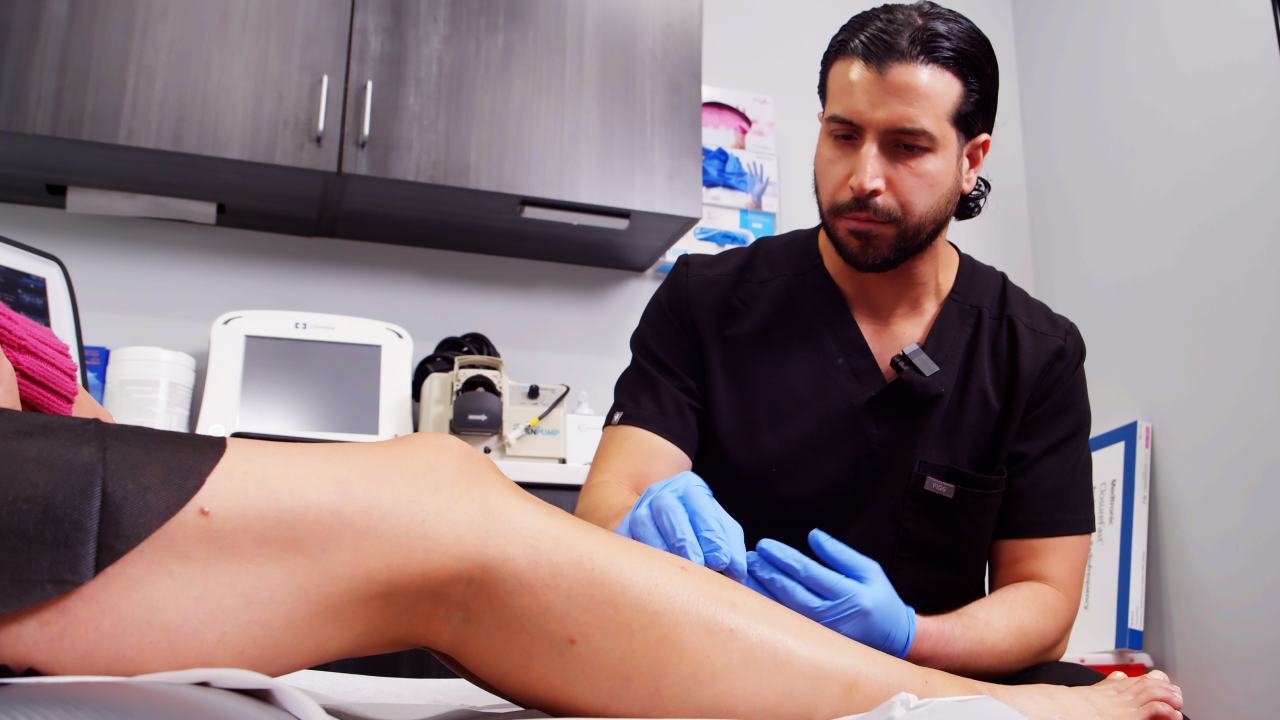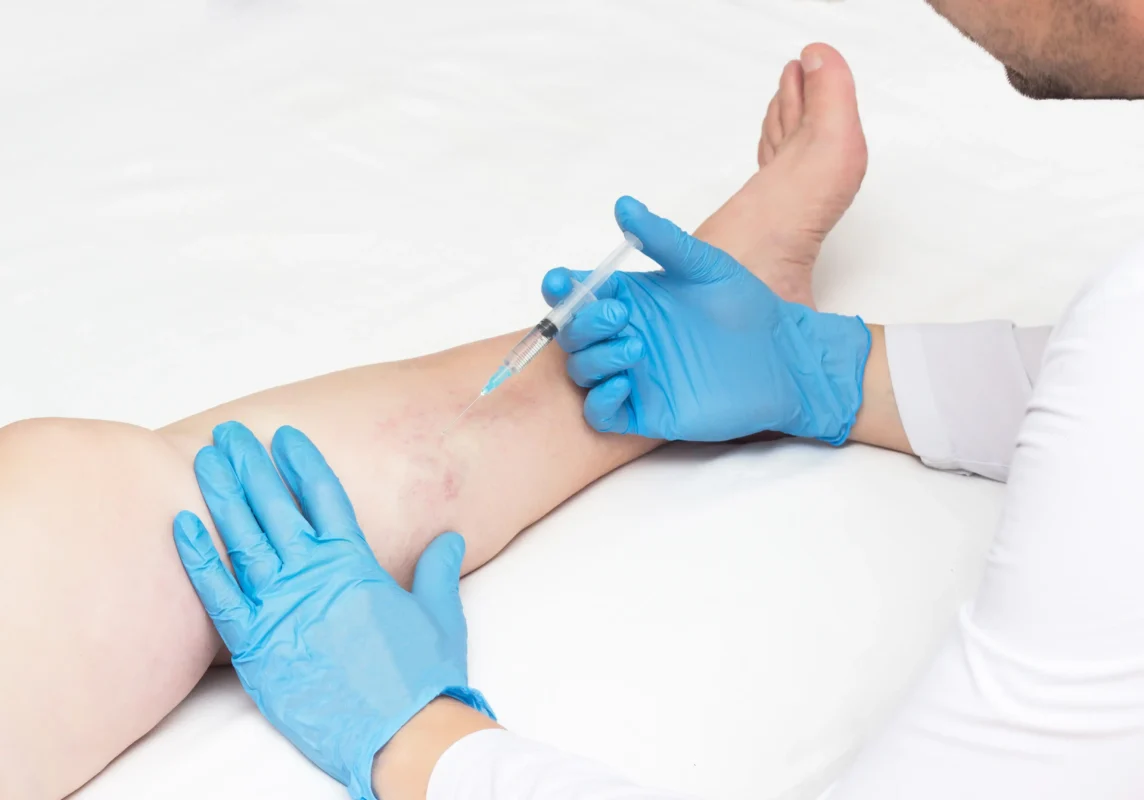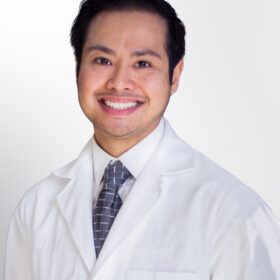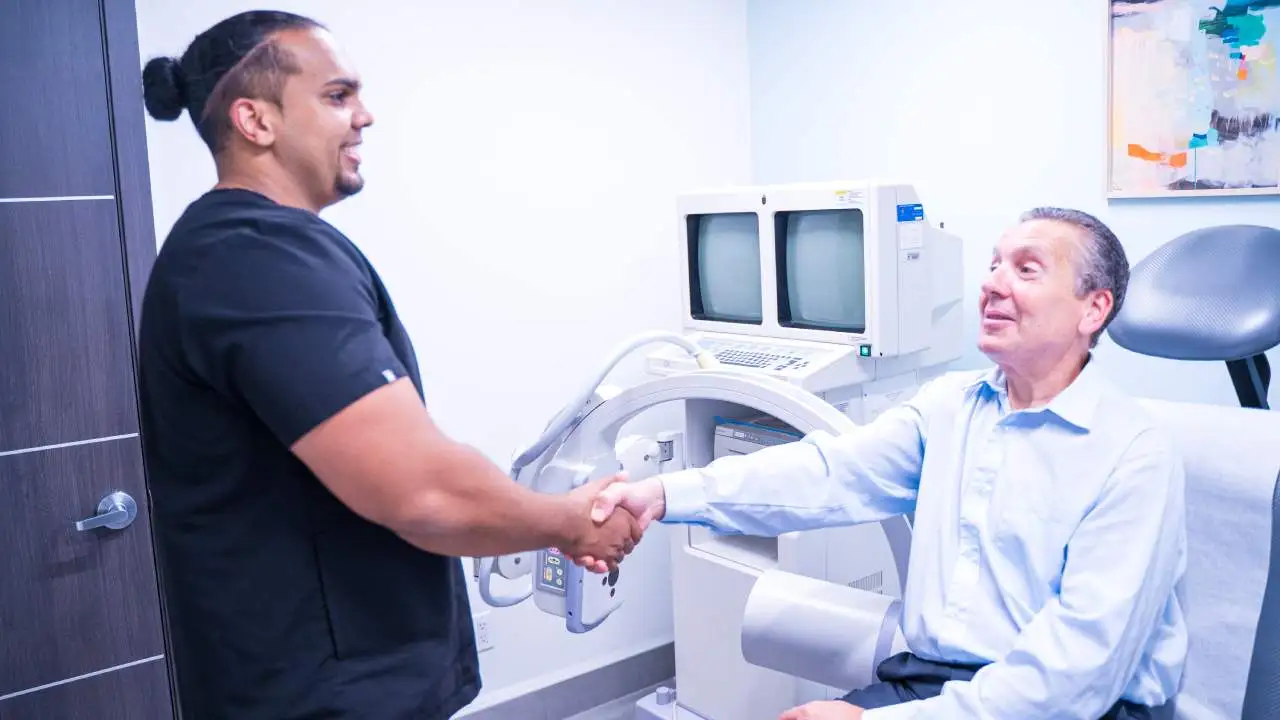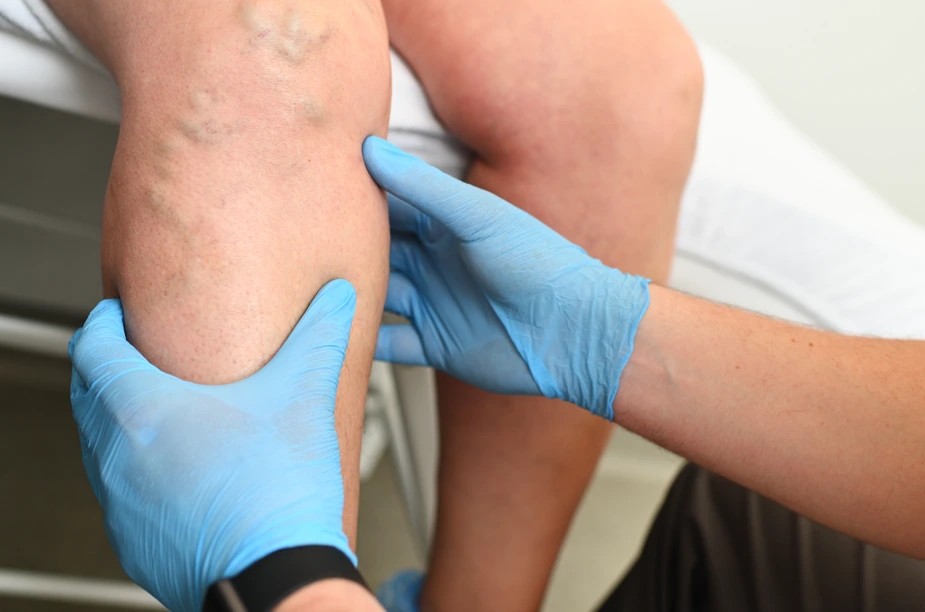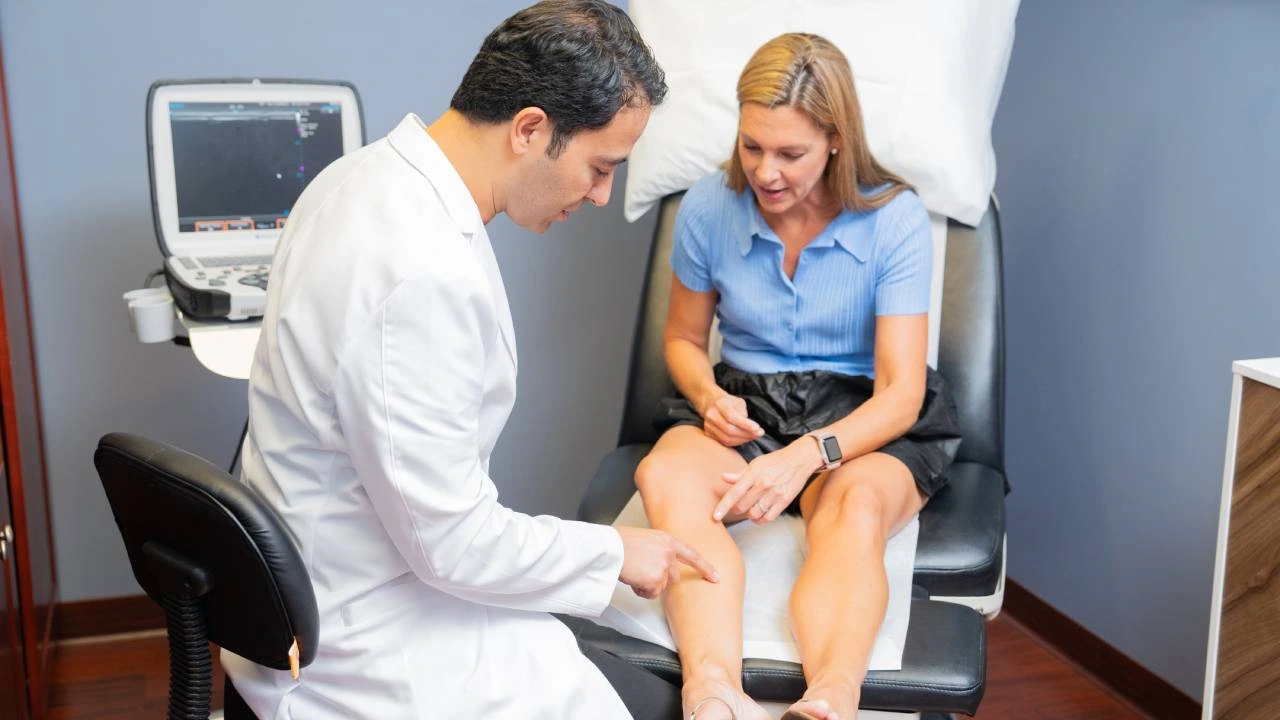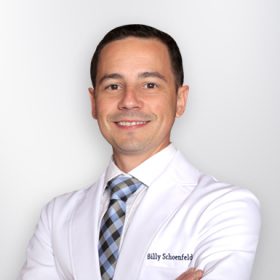You’re sitting at your desk after a long day, and as you stretch your legs, you notice a dull ache creeping up your calves. Looking down, you see faint blue or purple lines spidering across your skin. At first, they seem harmless—maybe a natural part of aging or a result of long hours on your feet. You think about it for a moment and then brush it off. It’s easy to dismiss these early signs as minor cosmetic concerns. However, these symptoms might be signaling the onset of a more serious condition: venous insufficiency.
Many people don’t realize that ignoring early symptoms like spider veins, varicose veins, or even that persistent heavy feeling in your legs can lead to more significant health issues. At Vein Treatment Clinic, we understand the complexities of vein health and emphasize the importance of addressing these signs promptly. Whether you’re dealing with discomfort or simply concerned about the appearance of your veins, the perfect time to see a vein specialist is when your symptoms first arise. In this article, we’ll guide you through the symptoms and conditions that indicate it’s time to consult with a vein doctor.
Recognizing the Early Symptoms of Vein Disease
Vein disease, such as varicose veins or venous insufficiency, can present in subtle ways at first. It’s easy to overlook the warning signs, but paying attention to your body can make a significant difference in preventing more severe issues later on.
Common Signs to Watch For:
- Visible Spider or Varicose Veins: One of the most obvious indicators is the appearance of spider veins or varicose veins. Spider veins are small, thread-like veins that often appear blue or red on the skin’s surface, while varicose veins are larger, twisted, and raised veins that may cause discomfort.
- Legs Feel Heavy or Tired: If you frequently feel heaviness or fatigue in your legs, especially after standing for long periods, it might be a sign of poor circulation. This symptom is often associated with venous insufficiency, where the veins in your legs struggle to send blood back to your heart efficiently.
- Swelling in the Legs and Ankles: Swollen legs or ankles can also indicate venous reflux or venous insufficiency. The swelling is caused by the accumulation of fluid in your lower extremities, as the veins cannot pump blood back effectively.
- Aching or Throbbing Pain: Persistent pain in your legs, particularly around areas where veins are visible, is a clear indication that it’s time to consult with a vein specialist. The discomfort can range from dull aching to sharp pain.
When to Worry About Varicose Veins
When to worry about varicose veins? Varicose veins are more than just a cosmetic issue. While they may start off as an aesthetic concern, they can worsen over time if left untreated. Venous insufficiency, the root cause of varicose veins, occurs when the valves in your veins malfunction, allowing blood to pool and cause vein bulging. Ignoring varicose veins can lead to more severe complications, including skin ulcers, blood clots, and deep vein thrombosis (DVT).
So, when should you worry about varicose veins? Here are some situations where immediate attention is necessary:
- If the veins become tender to the touch or cause significant pain.
- If you notice skin changes, such as discoloration or the development of ulcers around the ankles.
- If you experience spontaneous bleeding from varicose veins.
- If you feel a sudden increase in leg pain, swelling, or warmth, as this could be a sign of a blood clot.
If you’re experiencing any of these issues, it’s crucial to visit a vein specialist without delay. Early intervention can help prevent complications, making treatments like vein ablation more effective and reducing the risk of long-term damage.
Why Early Intervention Matters
Early intervention plays a key role in the successful treatment of vein conditions. The earlier you address symptoms of venous reflux or venous insufficiency, the easier it is to manage them. For example, sclerotherapy, a minimally invasive vein treatment for spider veins, is most effective when the underlying cause is treated in its early stages. Similarly, varicose vein treatments like endovenous laser ablation (EVLA) or radiofrequency ablation (RFA) are much more efficient when the condition hasn’t progressed to a more advanced stage.
Many patients are concerned about whether their vein treatment will be covered by insurance. The good news is that most varicose vein treatments are covered by medical insurance if they are deemed medically necessary. While spider veins are often considered cosmetic, the underlying condition, such as venous insufficiency, is covered by insurance. Therefore, if you are diagnosed with venous reflux, treatments like sclerotherapy may also be covered.
To find out if your vein treatment will be covered, contact us to request insurance verification. At Vein Treatment Clinic, we ensure that patients have access to affordable care by offering insurance verification before you even schedule your first consultation. This way, you can focus on your vein treatment without worrying about unexpected costs.
The Benefits of Minimally Invasive Vein Treatments
One of the most common concerns patients have when visiting a vein doctor is the fear of invasive procedures. However, modern vein treatments are far from the traditional surgeries of the past. Today, nearly all vein treatments are minimally invasive, meaning they involve little to no downtime and can be performed in the comfort of an outpatient setting. At Vein Treatment Clinic, we offer a range of cutting-edge spider vein and varicose vein treatments, including:
- Sclerotherapy: A safe, quick, and effective treatment for spider veins that involves injecting a solution into the affected veins, causing them to close and fade over time.
- Endovenous Laser Ablation (EVLA): A minimally invasive procedure that uses laser energy to close off faulty veins, redirecting blood flow to healthier veins.
- Radiofrequency Ablation (RFA): Similar to EVLA, RFA uses radiofrequency energy to treat larger varicose veins by collapsing the vein walls.
- VenaSeal: A cutting-edge treatment that uses medical adhesive to close varicose veins with no need for heat or anesthesia.
- ClariVein: A combined technique that involves a rotating catheter and sclerosing agent to treat varicose veins.
- Ambulatory Phlebectomy: A procedure that physically removes large varicose veins through tiny incisions in the skin.
These vein treatments are highly effective, and because they’re minimally invasive, most patients can return to their normal activities within a day or two. If you’re wondering how to get rid of spider veins or treat your varicose veins, our experienced team can guide you through the best options for your specific case.
Take Control of Your Vein Health
If you’ve noticed symptoms like aching legs, leg swelling, or visible veins, it’s time to take action. By consulting with a vein doctor, you can address the root cause of your symptoms and prevent the progression of vein disease. The team at Vein Treatment Clinic is dedicated to offering personalized treatment plans using state-of-the-art technology.
We have locations across New York, Long Island, California, Maryland, and New Jersey, so there are always vein clinics nearby. Visit your nearest vein clinic to discuss your symptoms and treatment options and take the first step toward healthier, more comfortable legs. Contact us to schedule a consultation today and regain control of your vein health.


